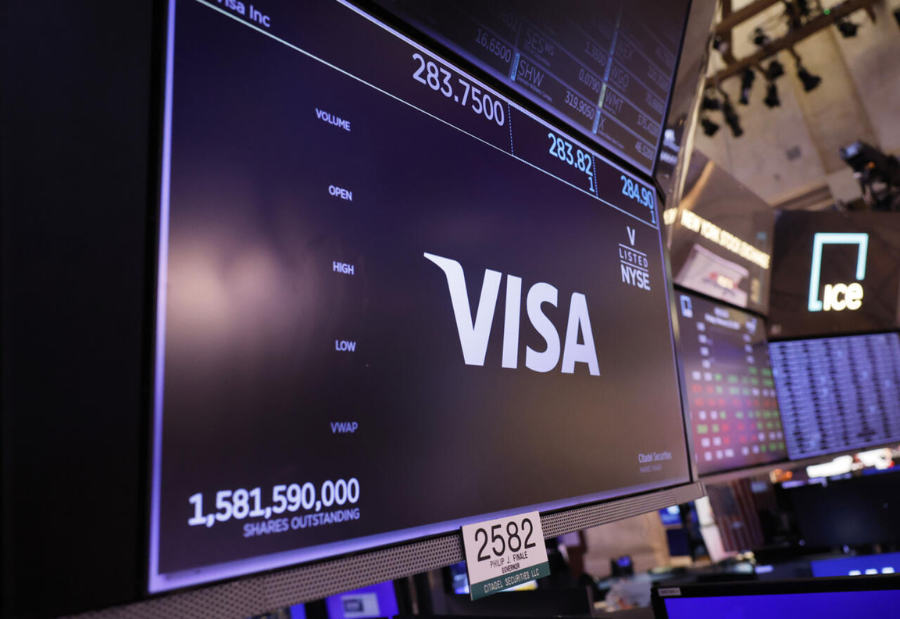In a quiet corner of suburban Washington known as Data Center Alley—where a large share of the world’s internet traffic is managed—Visa runs its global fraud command center.
Each year, around $15 trillion moves through Visa’s payment network, accounting for about 15% of the global economy. With such vast sums at play, cybercriminals are constantly trying to steal even a fraction of it.
Visa faces attackers with vastly different skill levels. To stay ahead, the company has spent $12 billion over the past five years to build AI-powered systems that can detect and stop fraud in real time.
“You have everybody from a single individual threat actor looking to make a quick buck all the way to really corporatized criminal organisations that generate tens or hundreds of millions of dollars annually from fraud and scam activities,” said Michael Jabbara, Visa’s global head of fraud solutions, during a tour of the company’s security center. “These organisations are very structured in how they operate.”
Well-funded fraud groups are increasingly targeting consumers directly, using emotional manipulation to trick them into making payments or sharing information.
“Consumers are continuously vulnerable. They can be exploited, and that’s where we’ve seen a much higher incidence of attacks recently,” Jabbara said.
He added that online deals that seem “too good to be true” should raise red flags, and warned particularly against romantic contacts with strangers in faraway places.
“What you don’t realize is that the person you’re chatting with is more likely than not in a place like Myanmar,” he said. According to Jabbara, some scam centers in Myanmar’s remote border areas are run by Asian crime syndicates and rely on forced labor.
These scammers often use subtle methods to drain money. Once they get hold of a card number, they may use it to make small, recurring charges that can go unnoticed for months.
Some of these operations run like real tech firms, providing tools and services to other criminals—similar to how Google or Microsoft offer services to businesses.
“You can buy the software. You can buy a tutorial on how to use the software. You can get access to a mule network on the ground or you can get access to a bot network” for denial-of-service attacks that can flood and shut down servers.
Jabbara noted that cybercrime is evolving quickly, with services now available off-the-shelf, making it easier for criminals to carry out large-scale fraud. Some groups even hire “chief risk officers” to assess which targets are too risky, such as government or hospital systems.
To fight back, Jabbara leads a team that studies scam techniques and monitors threats around the clock. At Visa’s Risk Operations Center in Virginia, analysts track massive data flows across screens, watching for suspicious activity.
In the larger Cyber Fusion Center, teams constantly monitor threats to Visa’s own systems. “We deal with millions of attacks across different parts of our network,” Jabbara said, noting most are automatically blocked.
Similar centers in London and Singapore provide round-the-clock global protection.
Also read: Viksit Workforce for a Viksit Bharat
Do Follow: The Mainstream formerly known as CIO News LinkedIn Account | The Mainstream formerly known as CIO News Facebook | The Mainstream formerly known as CIO News Youtube | The Mainstream formerly known as CIO News Twitter |The Mainstream formerly known as CIO News Whatsapp Channel | The Mainstream formerly known as CIO News Instagram
About us:
The Mainstream formerly known as CIO News is a premier platform dedicated to delivering latest news, updates, and insights from the tech industry. With its strong foundation of intellectual property and thought leadership, the platform is well-positioned to stay ahead of the curve and lead conversations about how technology shapes our world. From its early days as CIO News to its rebranding as The Mainstream on November 28, 2024, it has been expanding its global reach, targeting key markets in the Middle East & Africa, ASEAN, the USA, and the UK. The Mainstream is a vision to put technology at the center of every conversation, inspiring professionals and organizations to embrace the future of tech.




